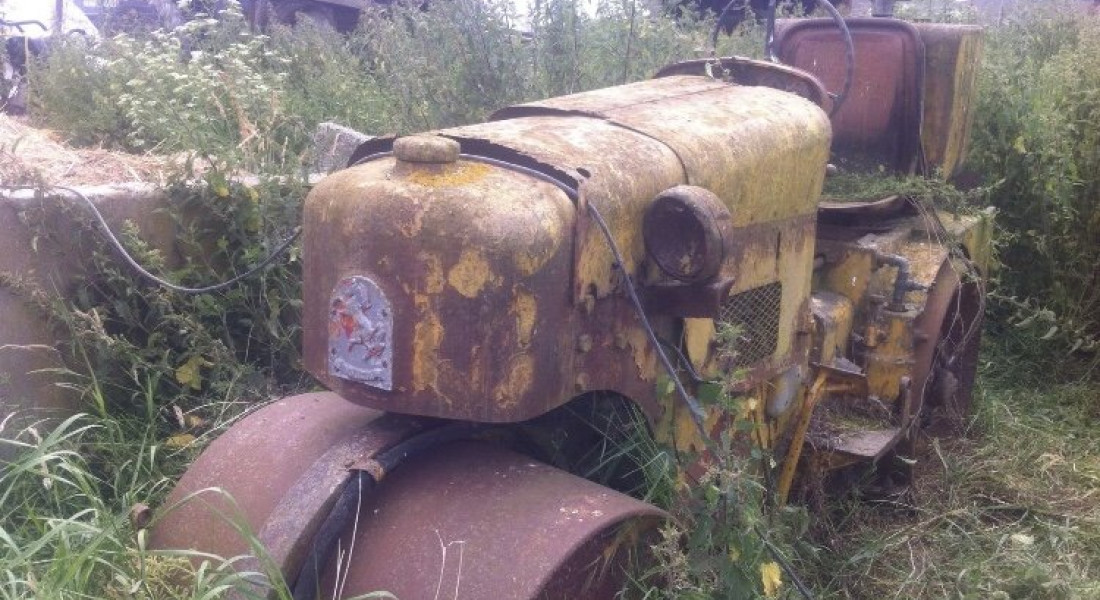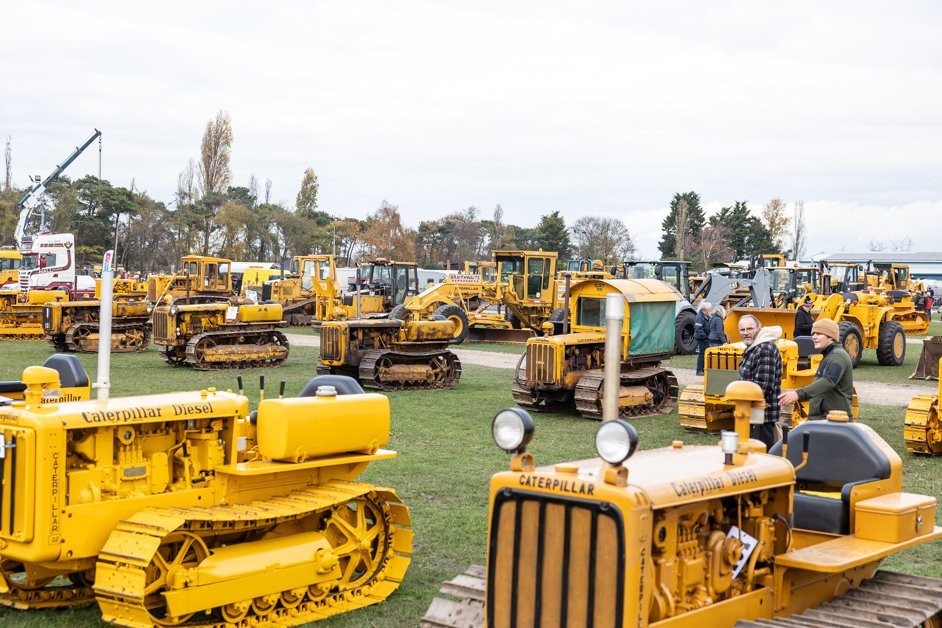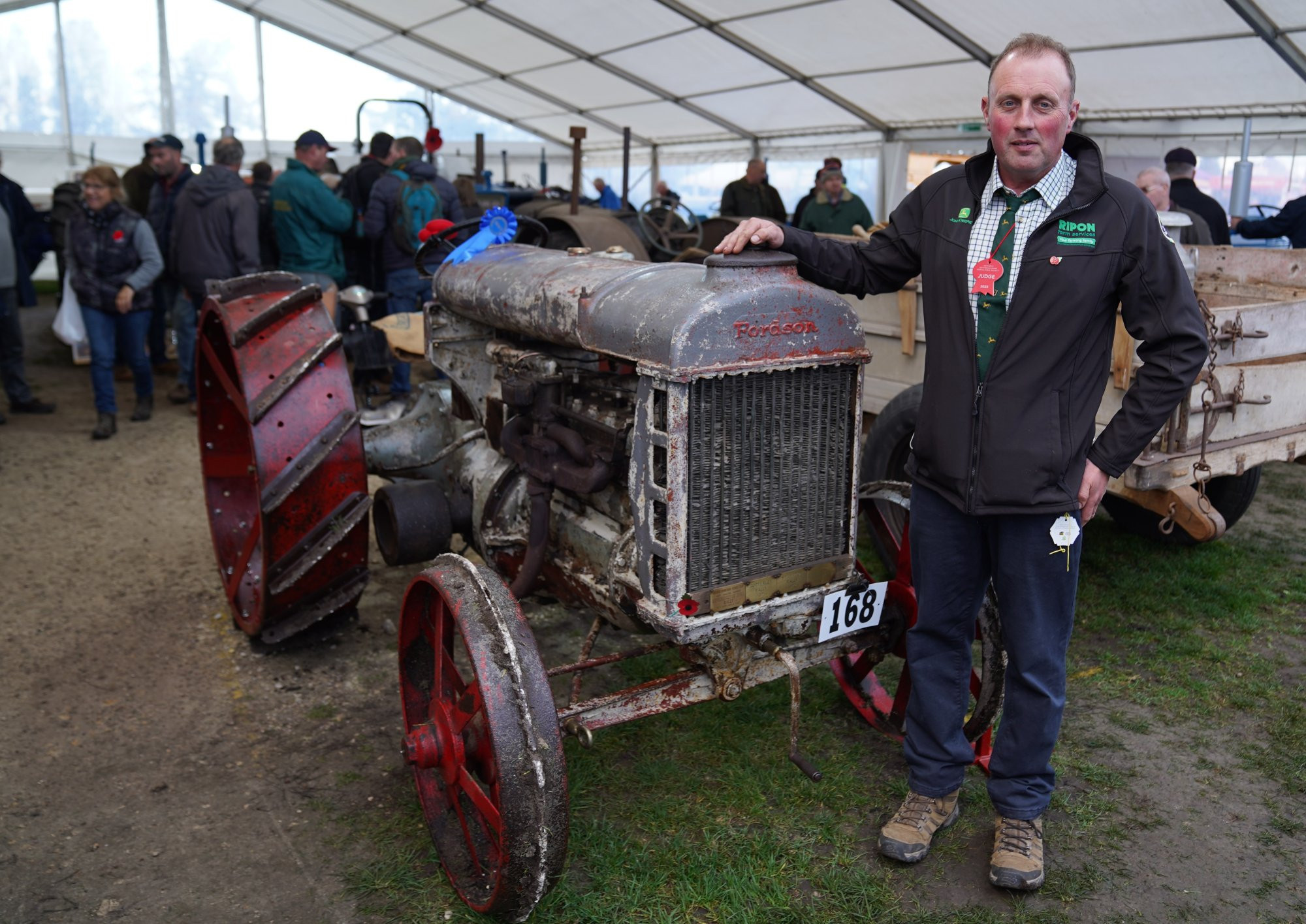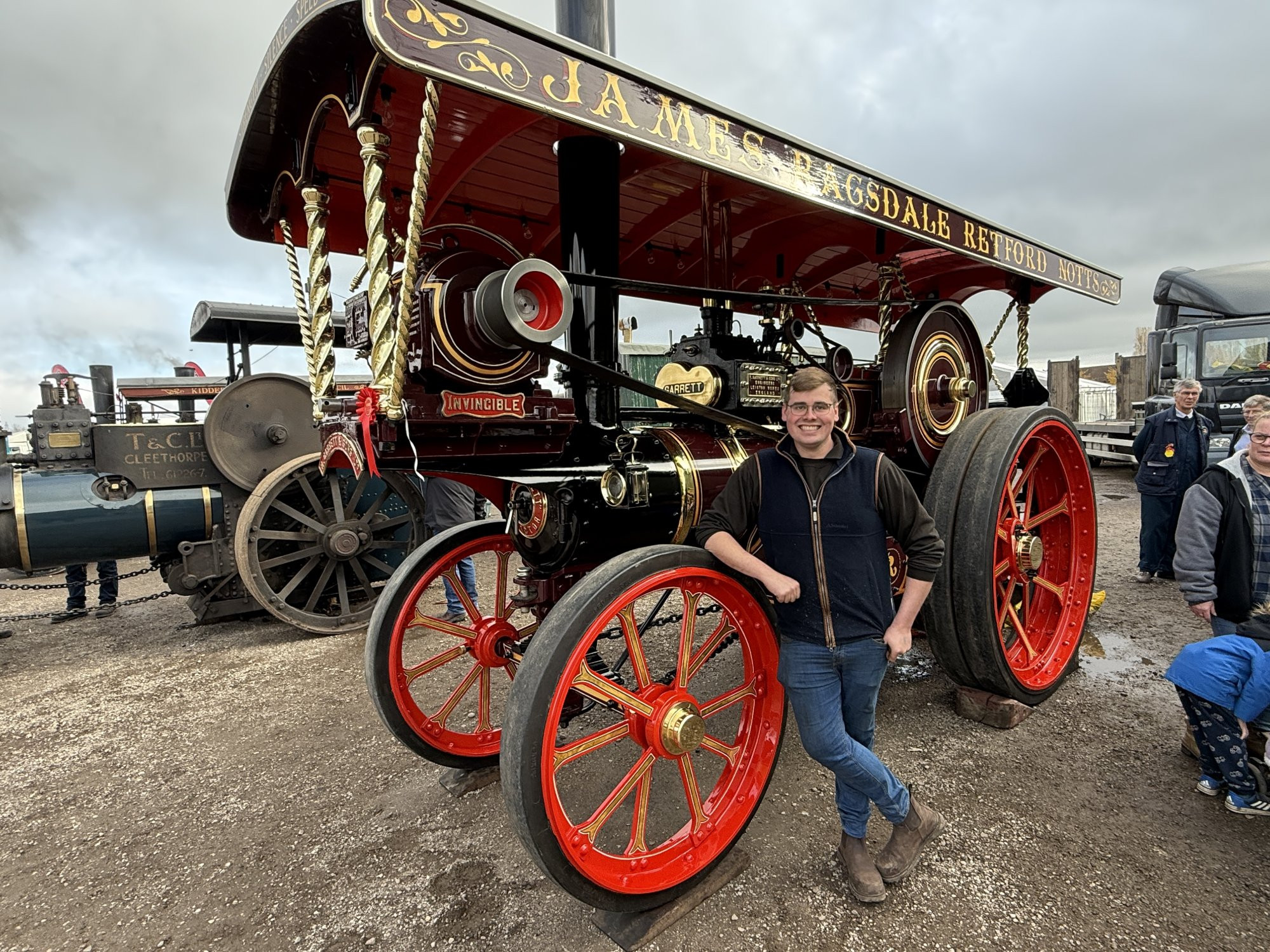Power of the past: Man and machine
The British Isles have a vibrant industrial past and the Newark Vintage Tractor & Heritage Show, held at Newark Showground on 9-10 November, will be celebrating the nation’s heavy plant machinery and historic sugar beet production.
A pioneer of heavy plant and construction machinery, Aveling-Barford has an undeniable legacy and a dedicated, multi-generational following.
Its beginnings were the result of a 1933 merger of British manufacturing giants, Aveling & Porter and Barford & Perkins, under the combined ownership of agricultural machinery manufacturer R A Lister & Co, and industrial equipment manufacturer Ruston & Hornsby.
Prior to the merger, Aveling & Porter, based in Rochester, was a popular manufacturer of steam road rollers and traction engines – credited for supplying 75% of UK road rollers by 1937, says Benjamin Hobster, a heavy plant mechanic and Aveling-Barford enthusiast. “And Barford & Perkins, in Peterborough, specialised in agricultural machinery.”
In 1934, the new company moved to a new site in Grantham. It also introduced diesel engines, which included Ruston & Hornsby engines, and in 1939 produced its first dumper truck, the SA Dumper – a 4x2 shuttle dumper with 4.5 Cubic yard (YD) capacity.
“During the Second World War, Aveling-Barford made a significant contribution, producing a large number of Bren Gun Carriers,” adds Benjamin.
“Post-war, it resumed production of steam and diesel rollers, as well as other diesel-powered construction equipment. And in 1946 it opened an additional factory to manufacture lighter machines.”
In the same year, the company introduced the G series diesel road rollers; three-point deadweight road rollers, with the GA its flagship model. This was followed in 1950 by the 4x4 Aveling Austin 99H – a motor grader manufactured under licence from Austin Western until 1972.
Wanting to expand its own range of lighter motor graders, in 1953 Aveling-Barford introduced the RM grader – mounted on a Fordson tractor. “Its first front loader also appeared in 1953, mounted on a Fordson skid unit, with the bucket mechanism being a cable-operated, rear mounted winch,” he explains.
And in 1958 the firm produced its first purpose-built loader, a 4x4 rear-steer machine. Aveling-Barford later manufactured a catalogue of other equipment, including site dumpers, rigid and articulated dumper trucks, and small (calf) dozers.
In 1967, the business became part of British Leyland; a move which many enthusiasts see as its undoing, before it was sold in 1988 to Wordsworth Holdings. In 2010, the company ceased production.
Benjamin owns two of the firm’s icons, one of which he will be exhibiting at this year’s show. “It’s a two-tonne roller with a two-cylinder Lister SR2 diesel engine,” he says. “I bought it in 2017 and paid around £160 for it.”
Travelling from Grantham to Kent, he had to pull the roller out of a hedge. “All the bodywork was rotten,” he says. “And while the gears and steering mechanism had seized – it did run.”
Ben restored the roller, completing the job in 2021. “Some parts have been hard to come by; I had to repurpose a Field Marshall Mk2 seat for it – it’s as close to an original as I could get.”
He is also the owner of a 1959 Mk4 calf dozer, complete with a single-cylinder Armstrong & Siddeley diesel engine. “Often, they were used for backfilling trenches,” he explains. “But mine was used at Edinburgh Docks to move cargo around the hull of a ship for unloading.
“It’s my current project; it needs a new gearbox, new clutch and it needs resealing – the bodywork needs overhauling, too. I like to restore them to their original condition, which does cost money, and has to be done around my work.”
When it comes to farm work, the development of the sugar beet industry ran as much on manpower as it did machine. And at this year’s show, its mechanical evolution will feature.
Sugar beet production in the UK had a false start; a factory built in 1860 failed after a few years due to lack of government support. However, in the early 1900s Dutch investors, including Dutch farmer Johannes van Rossum, travelled to the UK to contract farms to grow the crop. Then, in 1912, van Rossum built a sugar beet factory in Cantley, Norfolk.
Just after the First World War the crop took off, heavily influenced by shortages in sugar imports putting home-grown sugar into focus. By 1928 a further 17 factories had been built - including a 1921-built factory in Newark - owned by 13 autonomous companies, until their amalgamation in 1936.
The sugar beet industry relied on manual labour well into the 1950s – but the mechanics of production evolved too, influenced by John Deere in the US, and the progressive European industry.
“Standen Engineering is a big name in the development of beet machinery,” says Charlie Wright, arable farmer and show committee member.
“But in the 1970s there were also contractors designing and building their own kit. Malcolm Rumley was one, he built a two-row self-propelled harvester. However, European growers were leaps and bounds ahead, with self-propelled, six-row machines in the field.”
Charlie will be showcasing some of his family farm’s collection, including a late 1940s Standen Challenger – a single-row, trailed and tractor-powered lifter loader, bought in the 1980s in original condition.
He also has a Standen Rapide Tanker Mk3A harvester, complete with Opel wheels and two-tonne capacity tank. “My father, Brian, bought it in the early 1990s to save it from scrap,” he says. “It was one of the last to be built, and it was barely used.”
Leigh Granger, vice chair at the Peterborough Farm Machinery Preservation Society (PFMPS), will also be participating with a rare piece of Belgium-built machinery. “We’ve got a 1968 Frandon hoe fitted to a 1966 International B275 tractor,” says Leigh.
“The operator sat aside the hoe, operating the tractor from that position, which enabled them to sit closer to the crop; it reduced the risk of damaging the crop. We believe there were only three made, so it’s possible it is the only one remaining.”
Originally salvaged by an ex British Sugar worker, PFMPS saved the piece in 2020 when it was once again at risk of scrap. “Michael Sly at Park Farms, Thorney, agreed to storing it with his collection,” notes Leigh. “Between our members and Park Farm employees the hoe was recommissioned.
“We’ve had real interest at shows, and it won best overall exhibit at this year’s Carrington Steam & Heritage Show.”
For those wanting to enjoy a spectacle of vintage and heritage machines, discounted tickets are online until 1 November, thereafter gate prices will apply. Children (16 and under) enter for free.
www.newarkvintagetractorshow.ticketsrv.co.uk/tickets/



